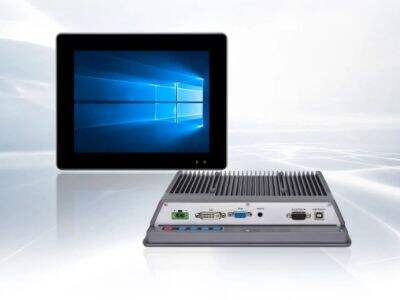Hello everyone! Hi, welcome back to the Qiyang channel, and today we will be learning about some special computer parts called industrial motherboard. Unlike the common motherboards that we have in our desktop computers, industrial motherboards are tailored to businesses and factories. These motherboards are designed for use in challenging environments typical to places of work – factories. In this blog we will discuss on different types of industrial motherboards, their features and key differences between normal and industrial motherboards.
Types and Features
Qiyang manufactures various industrial motherboards to suit the general needs of the businesses. These broadly are the Qiyang Industrial Motherboard. This motherboard is designed for high-performance so it can easily manage heavy load like gaming and video editing. Ideal for companies that need powerful computers for running demanding software. The other kind is industrial motherboard Mini-itx. This type is tiny and is used in tiny computers, perfect for saving room. Mini-ITX motherboards are specifically suited for creation sites with limited space, such as small offices or specialized equipment areas.
Besides their different sizes, some industrial motherboards includes unusual features. As an example, they might also have reinforced circuits which as the name implies, are stronger and much less likely to fracture. Plus, they can function in a large temperature range, so they will work without issue when it is hot as hell or cold as hell. Also, industrial motherboards offer high-speed connectivity options, meaning they quickly and easily connect to other devices for enhanced productivity in a fast-paced workspace.
Differences Between Consumer and Industrial Motherboards
The difference between consumer motherboards and industrial motherboard now. Consumer motherboards are for home PCs, like the ones we use at home to game, do homework, browse the web, and more. In contrast, industrial motherboards are custom-made for enterprises that need high reliability and stability. You can consider the differences between these two motherboards on the basis of ruggedness, durability, and security.
Industrial motherboards can endure severe environments, such as extremes of temperature or dust. This means they last for a lot longer than standard motherboards which may not function if they get too hot or dirty. Moreover, Qiyang industrial touch screen panel pc motherboards come with highly secured advanced data security features which keeps the sensitive business data secure. This is highly critical in businesses as the companies need to protect their data from hackers and other concerned threats.
Factors to Consider
Unfortunately, there are some things to consider while choosing an industrial motherboard for your business. Getting started, you will need to ensure that you motherboard will mate up with the other components of your computer. And that is ensuring it supports the CPU (the brain of the computer), RAM (which helps your computer think faster), and any other hardware you have plans on using. It must be compatible with all parts so that everything can run smoothly.
Then you must think of motherboard size. Measure out the room you have in your system, and determine whether an undercut, or standard-sized Qiyang Industrial Monitor motherboard, can be accommodated. On the other hand, if space is tight, then a more compact motherboard could work in your favour. Last but not least, consider the power requirements of the motherboard. Be sure it will work the proper voltage levels required for your system. You also need to make sure that you provide the motherboard with sufficient power as if it doesn't get the necessary power, it might not even run!
Essential Parts of Industrial Motherboards
There are key components that Industrial motherboards have in comparison with consumer motherboards. Consists of the following components: chipset, CPU socket, RAM slots, PCI/PCIe slots, and the input/output (I/O) panel. It is the main building block that helps control the communication between various hardware components of the computer. It verifies that everything is functioning as it should.
The CPU socket, where the processor is installed, is extremely important since the CPU is vital to making the computer run. Those memory modules go into the RAM slots and allow the computer to remember things when turned on. PCI/PCIe Slots: Expansion cards plug into these ports, these are often used for graphics cards to enhance visuals or specialized network adapters to connect to the internet. Finally, the I/O panel is where the ports and connectors for external devices are located (such as keyboard, mouse, monitor(s), USB device(s), etc.). Together, each of these components serves a purpose in ensuring the industrial motherboard will be able to carry out its job.
Pros & Cons for Industrial Motherboards
Industrial motherboards bring in the benefits for your business. First of all, they are designed for durability and longevity. That makes them less susceptible to breakdowns and repair needs, which frees up time and money for businesses. Moreover, industrial motherboards also provide you additional features for security like BIOS protection, TPM chips, and secure boot. Such features of cybersecurity services protect organizations from cyber-attacks directed at sensitive information contained within an organization.
So, the other benefit is that the industrial motherboard can survive in the extremes of environment. The powerful drive mechanisms can work very well in the extreme temperatures along with high humidity and dusty places which make them best for factories, warehouses and other industry places. This is important for most businesses that operate in demanding environments where technology has to withstand the test of time.
At the same time, you also have some cons associated with it, as you can see in industrial motherboards. The downside is that they are generally pricier than average consumer motherboards. Although this means increased production costs due to the performance and longevity engineered into these devices. That may mean businesses will have to fork out additional dollars upfront to acquire the top technologies.
The second downside would be the lack of customization options. The trade-off is that industrial motherboards are crafted for specific business needs, so there may not be as much potential for switching them up to be what a business desires. This can be a disadvantage for enterprises that have specific needs from their PCs.
Conclusion
To sum up, the industrial motherboards produced by Qiyang is an exclusive component especial for enterprise with relatively harsh working environment. They are different from the regular motherboard with the features of high security, long-life, and strength. One of the critical aspects when selecting an industrial motherboard is how it relates to other components, its footprint, and its power requirements. They may be more expensive than standard consumer motherboards, but for businesses, the extended support lifetimes and ruggedness can pay off bigtime over the years.

 EN
EN
 AR
AR
 BG
BG
 HR
HR
 CS
CS
 DA
DA
 NL
NL
 FI
FI
 FR
FR
 DE
DE
 EL
EL
 HI
HI
 IT
IT
 JA
JA
 KO
KO
 NO
NO
 PL
PL
 PT
PT
 RO
RO
 RU
RU
 ES
ES
 SV
SV
 TL
TL
 IW
IW
 ID
ID
 SL
SL
 VI
VI
 HU
HU
 TH
TH
 TR
TR
 FA
FA
 AF
AF
 MS
MS
 GA
GA
 BN
BN
 EO
EO
 LA
LA
 NE
NE
 MY
MY
 KK
KK




